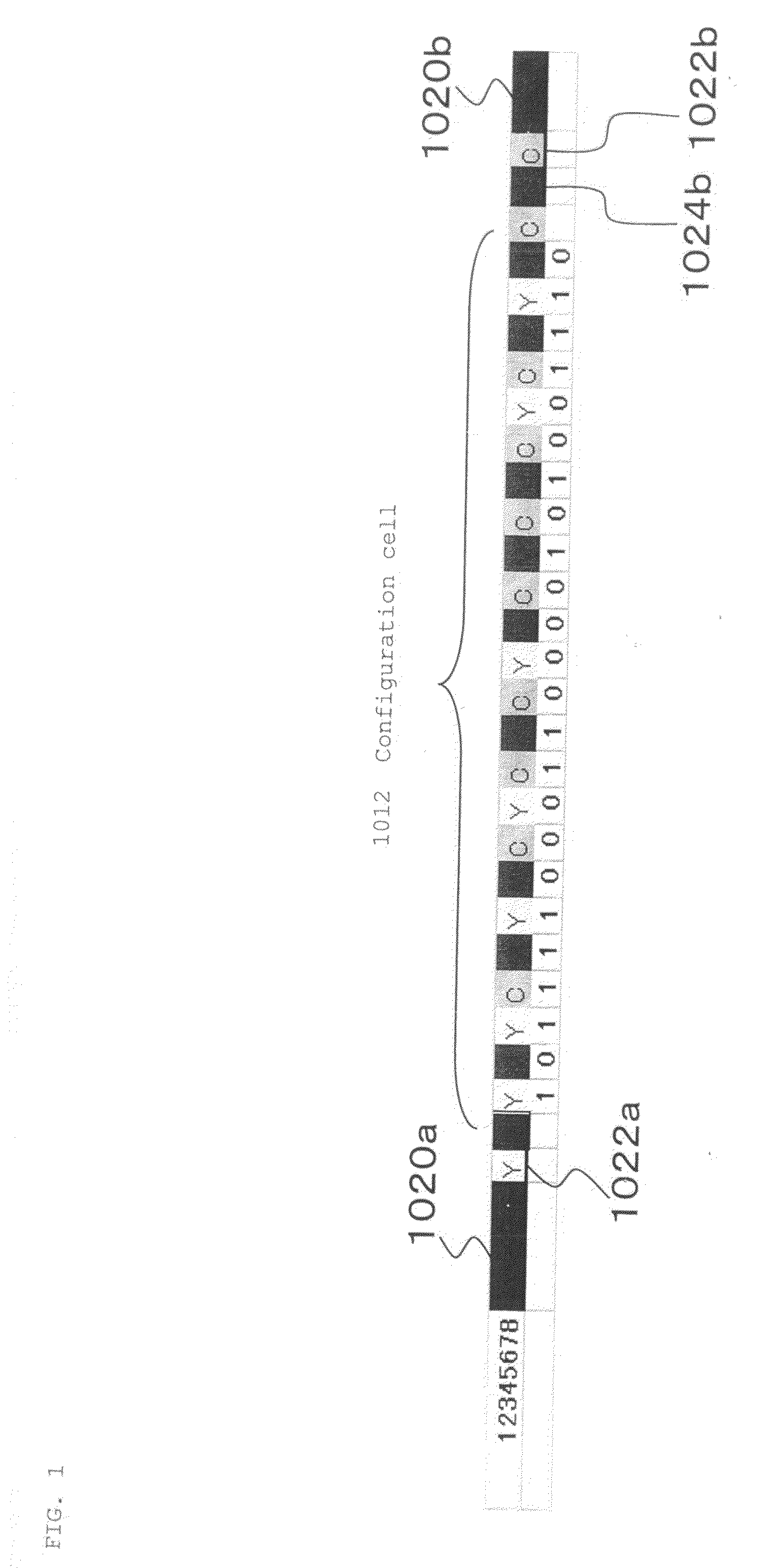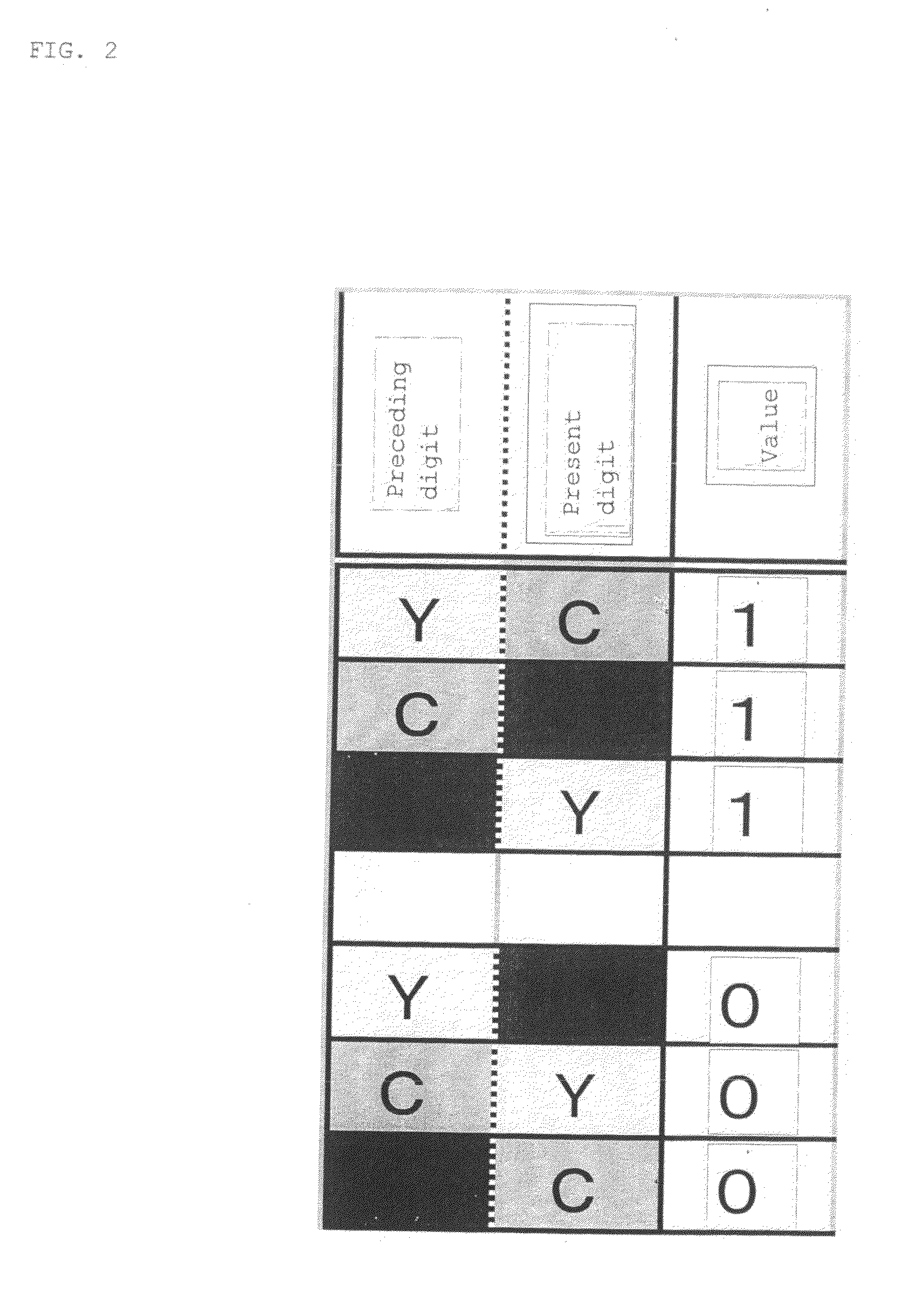Optical Symbol, Article to which the Optical Symbol is Attached, Method for Attaching Optical Symbol to Article, Optical Symbol Decoding Method, Related Device, and Related Program
a technology of optical symbols and optical symbols, applied in the field of optical symbols, can solve the problems of difficult for the conventional reading technique to handle such a 1d color bit code, difficult to achieve the effect of preventing data falsification and obtaining flexibility in design
- Summary
- Abstract
- Description
- Claims
- Application Information
AI Technical Summary
Benefits of technology
Problems solved by technology
Method used
Image
Examples
first embodiment
[0171]A preferred embodiment of the present invention will be described hereinbelow with reference to FIGS. 1 to 13.
[0172]In this embodiment, a code using an optical symbol having a form in which cells are placed linearly. The optical symbol is a symbol in a plane shape and is attached to various items.
Cell (Configuration Cell) and End-Point Cell
[0173]An optical symbol of this embodiment is constructed by cells and end-point cells. A cell is a range / area to which a single color is assigned and can be formed in various shapes such as circle, square, triangle, and the like. An optical symbol is formed by arranging these cells linearly.
[0174]The end-point cell is a cell positioned at an end point of an optical symbol made by a group of cells connected linearly. In this embodiment, the end-point cell is an area / range to which a color different from the color assigned to a cell other than the end-point cell is assigned. As will be described later, according to a combination (of colors) w...
example 1-1
[0178]FIG. 1 shows an example of an optical symbol 10 expressing numerical values “12345678” (in decimal). In the example 1-1, is represented as “101111000110000101001110” in binary. Therefore, in the example 1-1, the binary numbers “101111000110000101001110” are shown.
[0179]In FIG. 1, squares to which Y (representing yellow), M (representing magenta), and C (representing cyan) or the like are assigned are cells 1012. By connecting a plurality of cells 1012, an optical symbol 1010 is constructed.
[0180]In the example 1-1, the elements “0” and “1” of the binary notation are expressed as in a table of FIG. 2. Specifically, “1” and “0” are not assigned to colors but are assigned to shifts of colors. In the example 1-1, black, cyan (C), magenta (M), and yellow (Y) are used, and shifts of colors from Y to C, from C to M, and from M to Y indicate “1” (see FIG. 2). Shifts of colors from Y to M, from C to Y, and from M to C indicate “0” (see FIG. 2).
[0181]That is, the value of the present di...
example 1-2
[0200]FIG. 6 shows an example of directly encoding numerals, alphabets, and the like (without converting to binary numbers).
[0201]FIG. 6 shows three kinds of conversion tables showing how numerals and alphabets are converted. Three kinds of conversions, a conversion starting from C, a conversion starting from M, and a conversion starting from Y are prepared according to the color of the first cell 1012.
[0202]Specifically, there are three ways of expressing “0”: arranging the cell 1012 in the order of “YMYCM”, arranging the cell 1012 in the order of “MCMYC”, and arranging the cell 1012 in the order of “CYCMY”. One of the three ways is selected according to the color of the preceding cell 1012, one of the three ways is selected.
[0203]Also in the method of the example 1-2 shown in FIG. 6, the code system is determined based on the color change direction of the neighboring cell 1012. FIG. 7 shows an explanatory diagram showing the relations of color change directions. As shown in FIG. 7...
PUM
 Login to View More
Login to View More Abstract
Description
Claims
Application Information
 Login to View More
Login to View More - R&D
- Intellectual Property
- Life Sciences
- Materials
- Tech Scout
- Unparalleled Data Quality
- Higher Quality Content
- 60% Fewer Hallucinations
Browse by: Latest US Patents, China's latest patents, Technical Efficacy Thesaurus, Application Domain, Technology Topic, Popular Technical Reports.
© 2025 PatSnap. All rights reserved.Legal|Privacy policy|Modern Slavery Act Transparency Statement|Sitemap|About US| Contact US: help@patsnap.com



